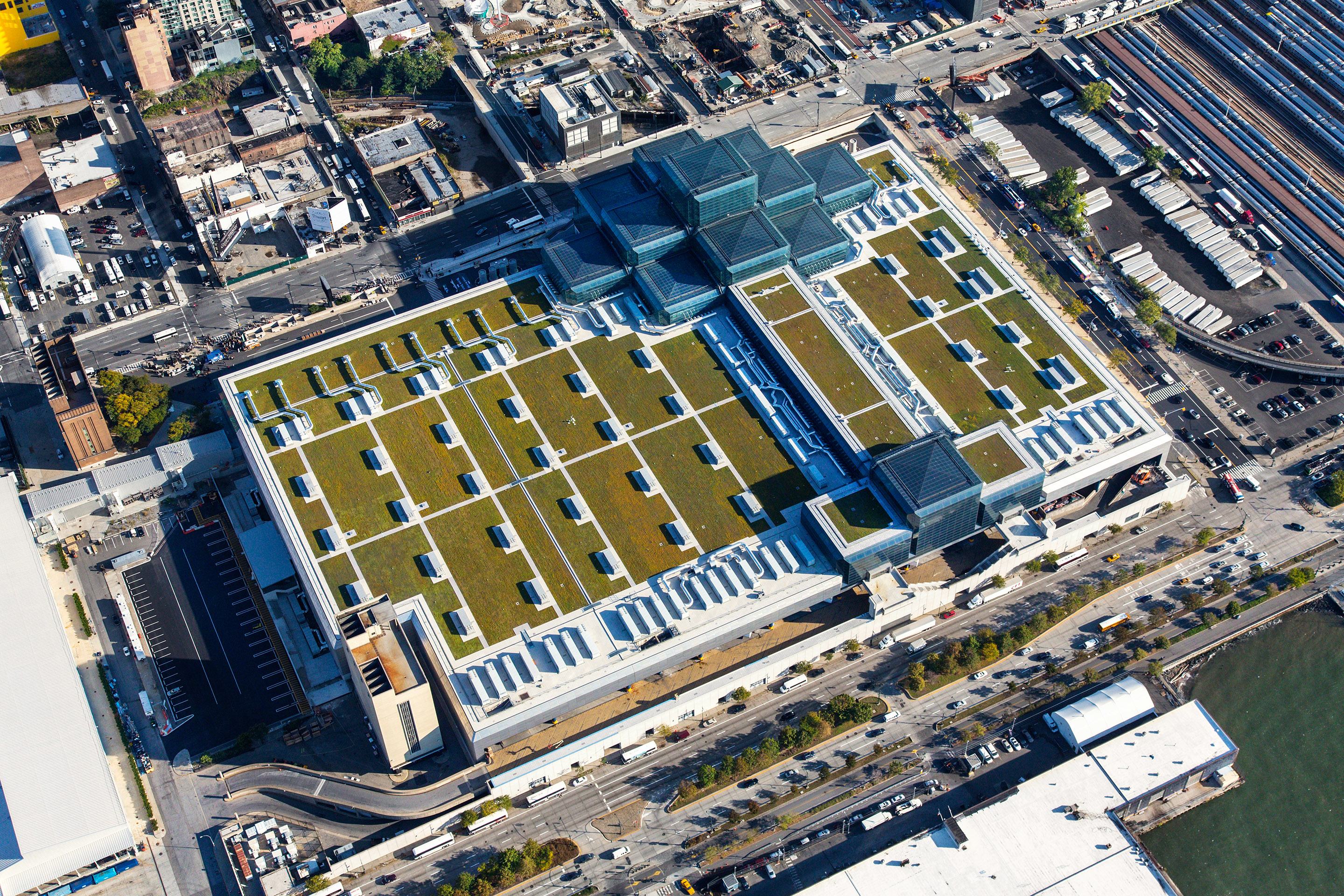How a giant Manhattan building learned to stop murdering birds
From The Idea Factory, our special report on innovation

The Jacob K. Javits Convention Center, a 1.8-million-square-foot, glass-paneled building in midtown Manhattan, was labeled in 2009 as one of the city's deadliest buildings for birds, according to the New York Audubon Society. Birds, often flying full speed, would smash into the massive convention center's huge windows. Roughly 470 birds were killed over a five-year period between 2005 and 2009. It was quite grisly.
It's also a common problem. In and around New York City, birds face disorienting light pollution and reflective glass windows in tall skyscrapers. An estimated 243,000 birds are killed each year from flying into the concrete and glass structures that crowd the streets of the city. Buildings can help prevent bird deaths, but it takes effort, like investing in bird-friendly glass, turning off lights at nighttime during migration, and using screens or bird tape on windows so birds can see them.
The Javits Center adopted many such recommendations, and today, it's gone from bird deathtrap to a bird-friendly urban sanctuary.
The Week
Escape your echo chamber. Get the facts behind the news, plus analysis from multiple perspectives.

Sign up for The Week's Free Newsletters
From our morning news briefing to a weekly Good News Newsletter, get the best of The Week delivered directly to your inbox.
From our morning news briefing to a weekly Good News Newsletter, get the best of The Week delivered directly to your inbox.
The convention center was recently renovated, and that included the construction of a 6.75-acre green roof, along with the installation of fritted, translucent glass panels — designed to prevent bird collisions — along the building's rooftop and facade.
Bruce Fowle said that when his architectural firm FXFOWLE Architects first won the contract to renovate the Javits Center in 2006, they were going to destroy and rebuild the entire structure. As planning progressed, Fowle, who helped NYC Audubon develop guidelines for how to deal with bird collision problems, analyzed different types of glass to find one with the right amount of glare and transparency to provide a visual barrier for birds. The fritted glass they used to renovate the Javits Center has pieces of porcelain in it to break up reflections without reducing visibility for humans.
The Javits Center has since sponsored a study by New York City Audubon and Fordham University to find out what types of species were utilizing the new green roof. Researchers counted a staggering 524 bird sightings on the roof during last spring and summer. All of the birds came from 12 different species, including barn swallows, European starlings, and herring gulls.
Dustin Partridge, a PhD student at Fordham University who works with Audubon and led the study, said he was thrilled to see juvenile American kestrels on the green roof, goofily hopping around as they learned to walk and foraging on grasshoppers and crickets. "It was the first time we observed kestrels actively foraging on a green roof in New York City," he said. "It was a nice buffet for them."
A free daily email with the biggest news stories of the day – and the best features from TheWeek.com

Researchers said that the surge in urban wildlife on the green roof is an indicator of a healthy environment.
"Species that show a good response to habitat are telling us that this is a good place to be," said Dr. Susan Elbin, NYC Audubon's director of conservation and science, who worked on the study.
NYC Audubon and Fordham University will continue studies on the Javits Center green roof this year to discover more ways it is benefiting New York City.
"Green roofs are excellent for connecting people that live in the environment and birds passing through," Partridge said.
As far as bird deaths go, Elbin said that her data shows a 90 percent decrease in collisions with the Javits Center as a result of the renovations. Now that’s something for the birds to sing about.
Amy Kraft is a print and radio reporter based in New York. She reports on science and the environment for publications including Scientific American, Discover, Popular Science, Psychology Today, and Distillations, a podcast out of the Chemical Heritage Foundation. She is currently working on a book of humor essays. You can check out more of her writing on her blog Jaded Bride.


